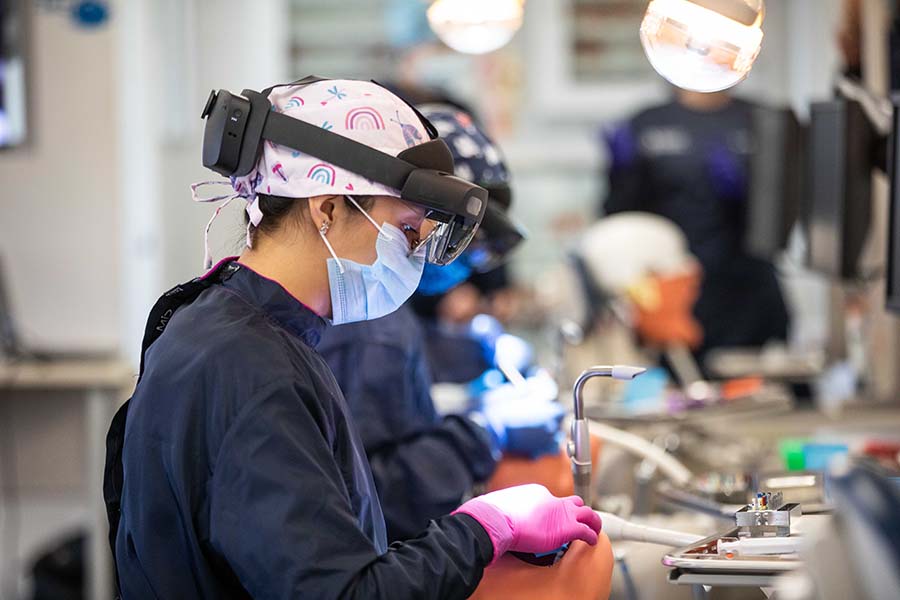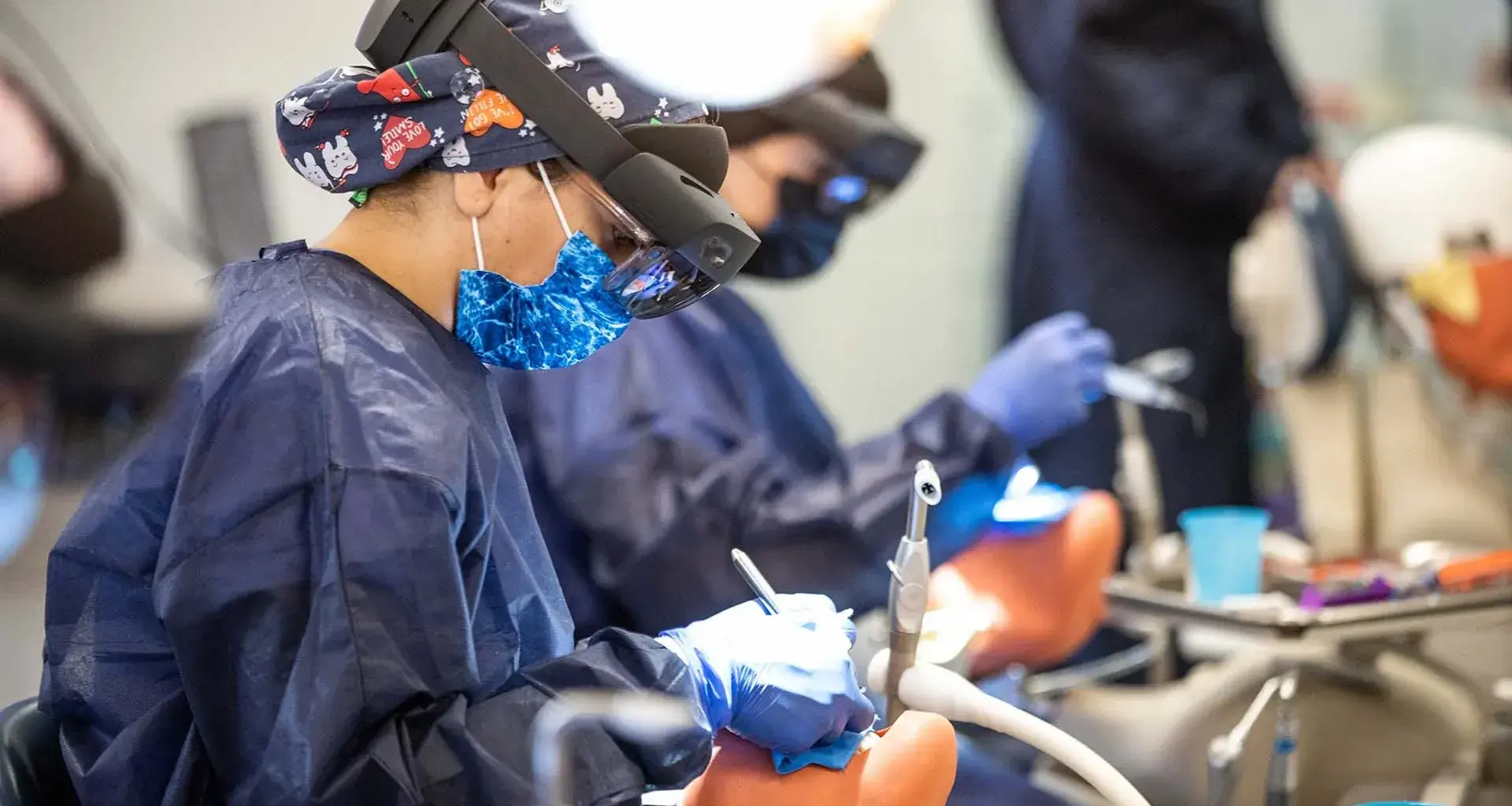Students from the bachelor’s degree program in Dental Surgery at the School of Medicine and Health Sciences can now practice endodontics in a simulator, while also receiving step-by-step technological support virtually and in real-time.
Through mixed reality and Hololens technology, Tec de Monterrey students are able to perform this procedure without needing a professor to be present.
“It’s a unique educational innovation project, that’s never been done before, at least not in Latin America,” said Dr. José Carlos Presa, Director of the Regional Department of Dentistry at the Tec.
“It’s very important to us that students use the latest technology in our areas of education, and it also increases the value of that project,” he added.

Self-managed learning
Prior to using this technology, sixth semester students prepare their preclinical work scenario on a dental simulator as follows:
Wearing the mixed reality goggles, they perform a root canal procedure following the instructions given by their virtual professor, as well as any additional information required at each stage of the procedure.
“They have to carry out a root canal procedure, which is considered a high-precision dental treatment that consists of removing the neurovascular bundle from the dental organ, performing a thorough cleaning and shaping of the root canal system, and concluding with the permanent sealing of the root canal.
“This procedure occurs frequently during dental visits and is intended to promote the permanence of the teeth inside the patient’s oral cavity,” the professor explained.
One of the challenges faced by the students is time, as they have a total of two hours to complete the self-managed process, which has more than 16 steps.
“This gives us an idea of how students have to perform these processes on their patients, including all of the clinical scenarios they will encounter.
“Self-managed training is expected to be extended to other areas of health sciences,” he added.
Although the project is currently in the exploratory stage, students will have access to this technology at any time.
All they have to do is reserve a slot in the dental simulator lab at the Tec’s School of Medicine and Health Sciences and begin their self-managed practice.
“This gives us an idea of how students have to perform these processes on their patients, including all of the clinical scenarios they will encounter.” - Dr. José Carlos Presa.
Mixed reality and its contribution to education
Ana Gabriela Rodríguez, leader of educational innovation at the Vice Rector’s Office for Academic Affairs and Educational Innovation, spoke about the benefits that this technology brings to Tec students.
“We’re exploring how useful it is in practice. Immersive mixed-reality learning helps us to analyze environments, see abstract concepts, practice, and even perform evaluations.
“In this experience, we’re looking at how to be more efficient, more scalable, and how to get the most out of extended reality, that’s why innovation is important,” she said.

Mauricio Martinez, leader of Creative Design and Development at the Tec’s Vice Rector’s Office for Academic Affairs and Educational Innovation, talked to CONECTA about the importance of immersion for students.
“We have found several ways that this technology benefits students. Primarily, immersion provides a hands-on and in-depth experience that allows them to have more tools and retain information better.
“If we tell students to perform a movement related to a procedure, they develop that skill through repetition. Many of the resources are self-managed and can generate knowledge through practice at any time,” he concluded.
It is important to mention that Dr. Karen Reyes and Dr. Regina García participated in this educational innovation, accompanied by pedagogical architect Olaf Román.
This group, along with instructional designers, graphic design, and production, created this procedural experience in mixed reality.
Hololens mixed reality technology
Hololens is a technology developed by Microsoft that consists of a mixed-reality device which allows you to interact with the virtual world in a more natural and immersive way.
The device is a pair of glasses that allows the user to see three-dimensional holograms superimposed on the real world, providing a unique augmented reality experience.
Mixed reality is a technology that combines virtual and real elements to create a new environment in which the user can interact.
This technology is an evolution of augmented reality, which enables virtual objects to be superimposed on the real world through a mobile device or camera.
READ MORE:


